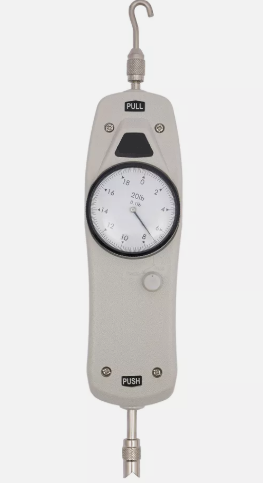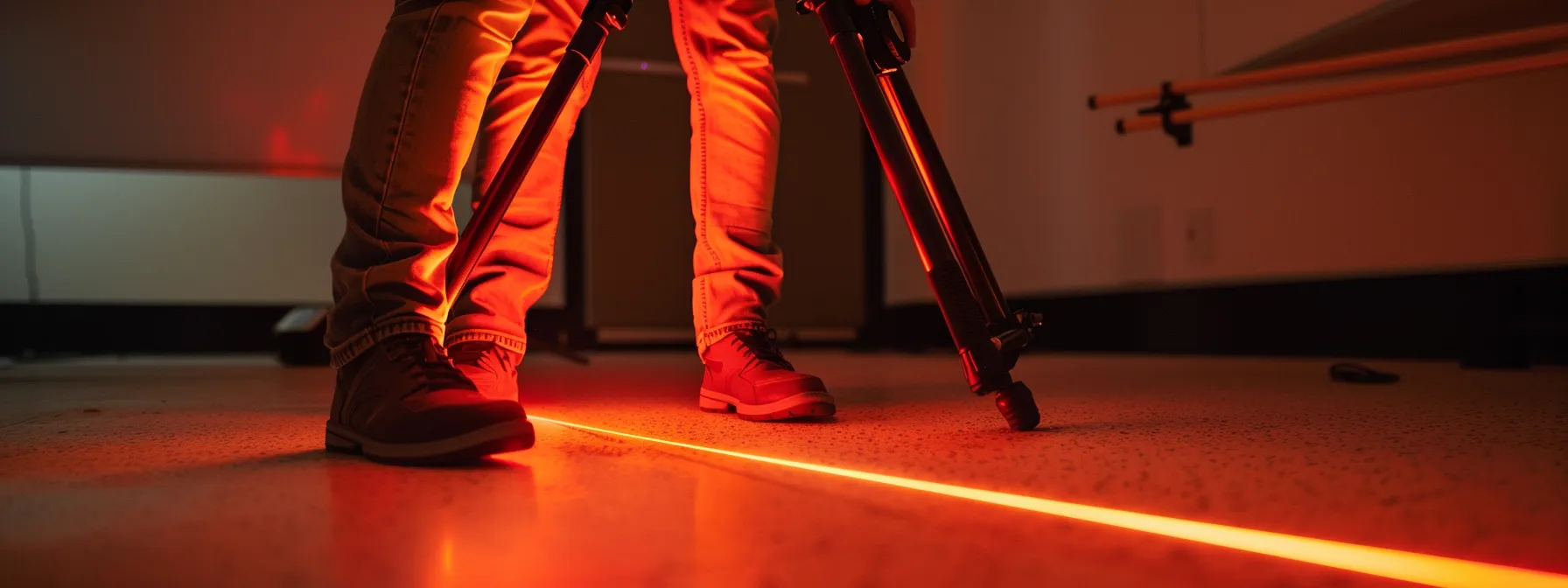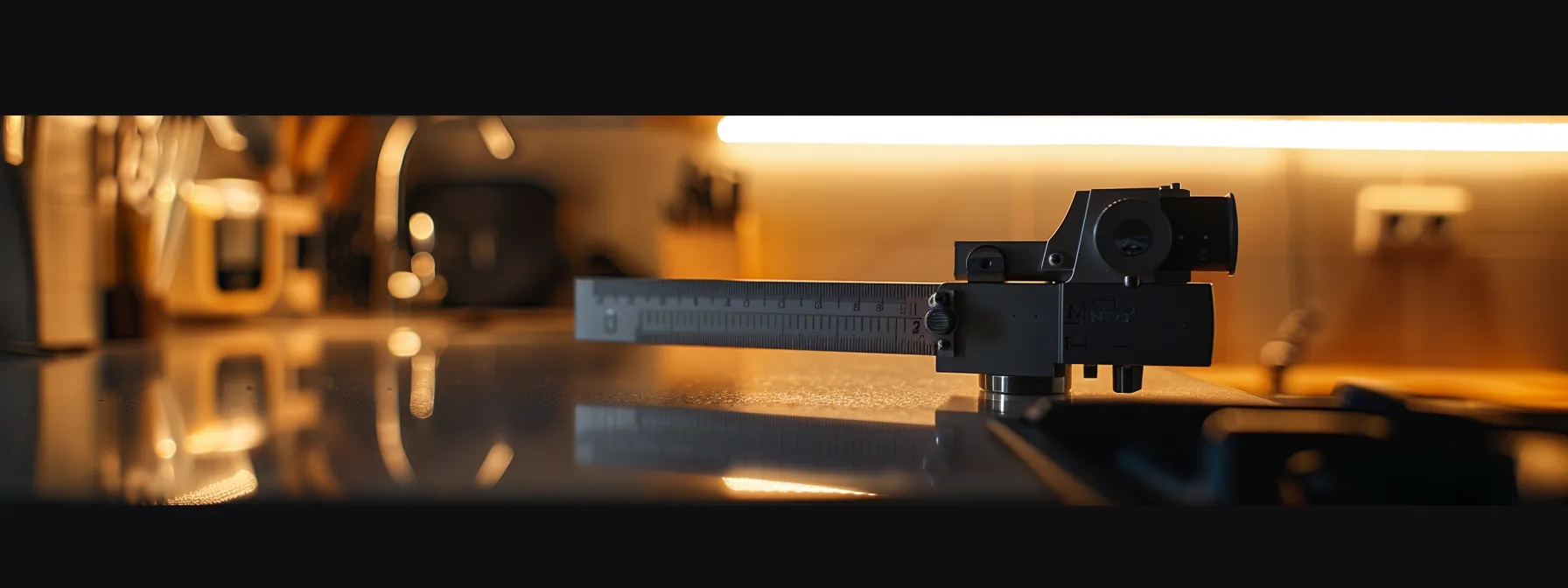
Ensuring proper ADA knee clearance is fundamental in designing accessible spaces, particularly around installations like sliding doors and elevators. Compliance with local jurisdiction requirements often necessitates a calculated approach, utilizing the best practices in measurement tools. From tape measures to specialized gauges, a variety of equipment exists to assist in verifying these critical clearances. Keep reading to uncover the essential tools that can enhance measurement accuracy and support ADA compliance efforts.

Measuring knee clearance is vital to ensure compliance with ADA regulations, particularly in venues where accessibility is key. A suitable tape measure can greatly aid in this process, as selecting the right tool is the first step in accurate measurement. Understanding the specific ADA requirements regarding knee clearance is essential for effective verification, especially in areas such as aisles within vehicles. Taking measurements systematically can prevent potential issues and enhance overall safety. Additionally, proper signage may indicate areas of compliance or need for adjustment, ensuring that the requirements of the law are met consistently. Insights into these aspects will facilitate a comprehensive approach to verification.
Selecting a suitable tape measure is critical for accurate ada knee clearance verification. It is recommended to choose a tape measure that features a reliable lock mechanism to maintain the desired length during measurement. Organizations should prioritize tools that align with internal standards to streamline compliance efforts.
Additionally, having a checklist that specifies the necessary measurements can enhance the process. A tape measure that is easy to handle and conforms to the needs of various environments, especially those with high traffic, can promote efficiency and accuracy. This systematic approach ensures that all aspects of knee clearance are appropriately addressed.
| Feature | Importance |
|---|---|
| Lock Mechanism | Holds measurements securely |
| Internal Standard Compliance | Ensures adherence to regulations |
| Checklist Utilization | Facilitates systematic measurement |
| Traffic Suitability | Promotes efficiency in busy areas |
| Organizational Alignment | Streamlines verification processes |
To measure knee clearance effectively, begin by identifying the specific dimensions that adhere to ADA regulation standards. Use a high-quality tape measure to ensure accuracy and precision, confirming that the measurement aligns with predetermined criteria. This approach reinforces the efficacy of compliance checks, allowing for adjustments where necessary to meet set benchmarks.
Next, position the tape measure at the appropriate height and extend it carefully to capture the total dimension of knee clearance. Observers should maintain a steady hand and a consistent reference point for accurate readings, as slight deviations can impact the overall assessment. Emphasizing attention to detail during this process enhances reliability in verifying compliance with ADA regulations.
Finally, document the measurement and cross-check it against ADA requirements, ensuring that all data collected exemplifies both accuracy and precision. This step not only fulfills regulatory obligations but also contributes to a safer, more accessible environment for individuals with disabilities. Adhering strictly to these procedures can significantly improve the verification process and uphold the organization‘s commitment to inclusion.
ADA requirements for knee clearance focus on enhancing usability for individuals with disabilities. This includes stipulations regarding the positioning of grab bars and similar fixtures, ensuring they do not impede accessibility and can accommodate the frequency of use in various environments. Maintaining an accurate database of measurements and compliance standards is crucial for organizations aiming to align with these regulations and promote inclusive designs.
While tape measures have long been a staple for verifying ADA knee clearance, advancements in technology offer new paths to precision. Enter laser distance meters, a game-changer for achieving unparalleled measurement accuracy.

Utilizing laser distance meters offers distinct advantages in measuring ADA knee clearance compared to traditional tools. These devices provide enhanced precision, allowing measurements to be taken quickly and accurately, often to the nearest inch. The elimination of physical measuring tapes reduces the possibility of pressure on the measuring tool, which can lead to inaccuracies in readings. Following the guidelines to ensure adherence to ADA compliance, users can utilize laser distance meters effectively, ensuring that measurements align with the international symbol of access. Proper use of these advanced tools facilitates a systematic approach, contributing to safer environments across various settings.
Laser distance meters offer significant advantages over traditional measuring tools, particularly for inspectors focused on ADA knee clearance verification. Their ability to take measurements perpendicular to the surface ensures enhanced accuracy, while the absence of physical tape eliminates the risk of bending or misalignment. This methodology not only saves time but also reduces the physical strain often associated with repetitive measuring tasks, particularly in high-occupancy areas.
Using a laser distance meter for ADA compliance involves positioning the device at the designated area and aiming it toward the desired surface or object, such as a handrail. Operators must ensure that the device is set to measure according to the specifications outlined in the international building code, which establishes precise guidelines for accessibility. This method not only streamlines the measuring process but also aids in maintaining consistency in compliance with regulations designed to support the immune system of inclusivity for individuals with disabilities.
After mastering the precision of laser distance meters, the focus shifts to another indispensable tool in measurement. Enter digital calipers, designed to tackle the intricacies of under-counter clearance with unmatched accuracy.

Digital calipers serve as an invaluable tool for accurately measuring under-counter clearance, particularly in settings that prioritize ADA compliance. These instruments provide precise readings, crucial for ensuring that areas are accessible for individuals with visual impairment. The use of digital calipers not only streamlines the measuring process, allowing for quick assessments, but also contributes significantly to adherence to accessibility standards. A step-by-step tutorial on employing digital calipers highlights the simple yet effective methodology behind their usage. By integrating these tools into measurement practices, organizations can enhance their efforts in promoting inclusivity while developing environments that accommodate diverse needs, much like how innovations in drug development rely on precision in titer assessments. This subsection fits seamlessly into the broader table of contents, emphasizing essential techniques utilized by professionals in various industries, including construction and design involving different materials, such as wood.
Digital calipers are invaluable for ensuring ADA compliance in various environments. They provide accurate measurements that are essential for evaluating under-counter clearance, especially for passengers with disabilities. With their user-friendly design and precise readings, these tools significantly enhance the efficiency of the evaluation process, helping assessors make informed adjustments where necessary.
To use digital calipers for measuring under-counter clearance, start by selecting the appropriate parameter for the measurement needed. The inspection process involves positioning the calipers to determine the diameter of the clearance space, ensuring that the tool is perpendicular to the surface for greater accuracy. Following guidelines from resources such as PubMed Central can enhance the understanding of measurement techniques in the context of bioanalysis, helping ensure compliance with ADA standards.
Digital calipers redefine accuracy, ensuring every measurement meets the highest standards. Equipping professionals with the right tools is vital, paving the way for effective ADA compliance checks.

ADA inspection tool kits serve as a critical resource in ensuring compliance with accessibility standards, particularly when measuring knee clearance. These kits typically contain essential instruments such as tape measures, which help verify the required space beneath doors and fire doors. Utilizing these tools effectively provides the necessary evidence to confirm that dimensions meet ADA specifications, while also allowing assessors to signal potential adjustments to enhance accessibility. Understanding the components of an ADA inspection tool kit and mastering the use of these tools reinforces organizations’ commitment to creating inclusive environments for all individuals.
An ADA inspection tool kit typically includes essential instruments needed for thorough assessments, such as tape measures and digital calipers. These tools facilitate the verification of compliance with accessibility guidelines, ensuring specifications are met in areas like lobby entries or where door closers are installed. A well-assembled kit may also contain reference materials, such as FAQs regarding ADA requirements and specifics on the interactions of accessible designs with features like peptides in construction materials.
| Tool | Purpose |
|---|---|
| Tape Measure | To confirm knee clearance and other dimensions. |
| Digital Calipers | For accurate readings in tight spaces. |
| Reference Materials | Guidelines and FAQs for ADA compliance. |
| Inspection Checklist | Ensures all relevant measurements are taken. |
To effectively utilize ADA inspection tools for measuring knee clearance, inspectors should begin by ensuring that all relevant instruments, such as tape measures and digital calipers, are readily available. The measuring process should be precise, paying close attention to the areas adjacent to hinges, where accessibility could be compromised. Additionally, maintaining awareness of guidelines set forth by the Food and Drug Administration and employing techniques akin to those used in ELISA assays can enhance the accuracy and reliability of measurements in environments influenced by telecommunications.
ADA inspection tool kits play a vital role in ensuring compliance, but one specific tool stands out: the ADA knee clearance gauge. This essential instrument guarantees that accessible spaces meet critical standards, making it a must-have for every inspector‘s toolkit.

Knee clearance gauges play a pivotal role in ensuring that spaces meet the established building code requirements essential for accessibility. These specialized tools allow inspectors to measure the available clearance in various settings, including areas around turnstiles, gates, and stairs, where precise dimensions are critical. By integrating knee clearance gauges into the ADA inspection process, assessors can evaluate compliance effectively, ensuring that adequate space is maintained for individuals using mobility devices. This approach not only facilitates accurate measurements but also enhances overall safety and accessibility in public venues.
Knee clearance gauges operate by providing a clear and precise measurement of the space available underneath surfaces, such as tiles or counters, ensuring they are accessible to individuals using mobility devices. These tools apply a gentle force to assess the required clearance accurately and consistently, which is essential for compliance with ADA regulations. Regular sampling of measurements in various environments helps maintain standards that promote therapy and support for those with disabilities, ultimately fostering inclusivity in public spaces.
Incorporating knee clearance gauges into ADA inspections enables inspectors to evaluate access around complex structures, such as revolving doors, where accurate measurements are critical. These gauges allow for a precise assessment of clearance spaces, ensuring that properties comply with ADA standards and thereby enhancing accessibility for all users. Furthermore, applying techniques akin to antibody testing in biomedicine can help inspectors systematically verify compliance in various construction contexts, ensuring that projects support inclusivity from the ground up.
Knee clearance gauges provide a crucial starting point for ensuring accessibility, but the journey doesn’t end there. Next, advanced ADA compliance software and apps offer innovative solutions for verifying measurements with unmatched accuracy.

Mobile applications and traditional measuring tools offer distinct advantages in verifying ADA knee clearance. Architects may find that integrating software with features designed specifically for accessibility enhances their ability to make precise measurements effectively. Advanced applications can provide real-time data analysis, allowing for immediate adjustments, while traditional tools like metal tape measures still hold value for tactile assessments. Furthermore, compatibility with tools used in other fields, such as the precision required in insulin delivery systems or the specificity of adalimumab dosing, underscores the importance of accuracy in measurements related to accessibility. By employing both methods, professionals can achieve comprehensive results that align with ADA regulations.
In the pursuit of measuring ADA knee clearance, professionals often weigh the benefits of mobile apps against traditional measuring tools. Mobile applications provide a dynamic platform to record measurements, enabling instant adjustments in response to environmental variables such as sidewalk conditions during emergency inspections. However, traditional instruments maintain their significance due to tactile feedback, delivering reliable results akin to measuring reagents in a laboratory setting where precision is critical, such as monitoring acid levels.
Advanced ADA compliance software incorporates features that facilitate precise measurements while ensuring adherence to regulations. Users can input dimensions such as the height of clearance areas and diagonal measurements, showcasing compliance visually. Additionally, the inclusion of braille indicators enhances accessibility for visually impaired individuals, while tools to assess jamb spacing ensure that all requirements are met efficiently.
| Feature | Purpose |
|---|---|
| Height Measurement Tool | Ensures knee clearance meets ADA standards. |
| Diagonal Measurement Function | Assesses clearance accuracy across surfaces. |
| Braille Indicators | Improves accessibility for visually impaired users. |
| Jamb Spacing Checker | Verifies compliance with structural regulations. |
“Essential Tools for Measuring ADA Knee Clearance” play a critical role in ensuring accessibility compliance. Proper tools like tape measures, digital calipers, and knee clearance gauges enable accurate measurements and enhance overall safety in public spaces. Using advanced technology, such as laser distance meters and ADA compliance software, streamlines the verification process and facilitates effective assessments. Organizations can better promote inclusivity by integrating these tools into their compliance efforts, benefiting individuals with disabilities.



Measuring door pressure is acting in compliance with building regulations, like the Americans with Disabilities Act (ADA). It’s an important step in ensuring accessibility, safety

When talking about building safety, the first things that come to mind are fire alarms, emergency exits and security systems. Meanwhile, the one tool that